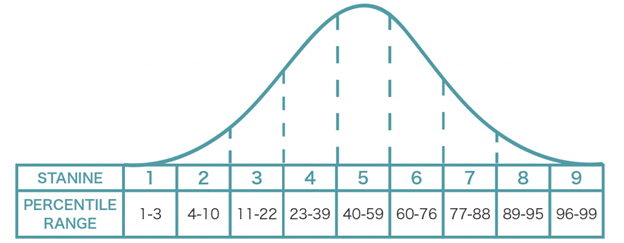Last Updated On: May 7th, 2025
For many students—and parents—the ISEE may be your first experience with standardized admission testing. Don’t worry, though—a few simple tips can help demystify the process and enable you to plan your ISEE journey for success.
What is the ISEE?
The ISEE (Independent School Entrance Exam) is an admissions test used by many of the most competitive private schools as one part of their application process. There are 4 different levels, depending on the grade to which you’re applying:
- Primary – for students entering grades 2-4
- Lower – for students entering grades 5-6
- Middle – for students entering grades 7-8
- Upper – for student entering grades 9-12
The ISEE includes the following 5 sections:
- Verbal – mainly a vocabulary test, with synonyms and sentence completions
- Quantitative Reasoning – tricky math word problems and, on the Middle and Upper Level tests, quantitative comparison questions
- Reading Comprehension – several passages with 5-6 questions on each passage
- Math Achievement – word problems measuring how far the student has advanced in math
- Essay – unscored, but sent to the schools along with your scores
If you’ve ever taken ERB tests in school, you might recognize some of the question types, and in fact, the same company creates both exams. But the ISEE is quite a bit more challenging. It’s a highly time-pressured test (less than one minute per question), it’s lengthy (over two hours total testing time), and it includes some material that’s above-grade-level. That’s why having a prep plan is so important.
Your test prep plan is going to vary, based on your schedule and other commitments. Your starting point and goals will be critical in determining how much prep you need and when you’ll want to start prepping. However, we recommend getting an early start whenever possible, in order to reduce stress and build confidence over time.
Taking the Test: When, Where, and How
The ISEE is offered in both paper and digital formats, with a wide selection of testing dates and locations. But the number of times you can take the test is quite limited. The ISEE is offered in three “testing seasons,” and students are limited to one test administration per season. The seasons are Spring/Summer (April-July), Fall (August-November), and Winter (December-March).

To increase their prep time—and because they’ll be learning material in school that will help them on the exam— most students forgo the Spring/Summer season and take their first test in the Fall season, usually in October or November. It’s common to follow-up the Fall test with a Winter test shortly after, such as in December. That way, students can get in two attempts at the test fairly close together, after a full course of prep. Most schools have application deadlines in January, so a December test is often the last available date for students applying for admission the following fall.
Your prep time frame will be determined by a number of factors. First, what’s your starting score level? ERB scores can be a good gauge, but ideally, you should take an ISEE diagnostic test to get an accurate measure of your score level. Next, look at the schools you’re interested in and check on their score expectations. ISEE and ERB scores are generally given in stanines, which equate to certain percentiles based on grade level:

Comparing your stanine score to the scores for your target schools will give you a sense of how much work you need to do to improve.
Ideal Prep: The 6-Month Timeline
If you’re looking for admission to the most competitive schools, or if you need improvement across multiple sections, this is the timeline for you. This is also a great option if you have a busy schedule and need to spread out your prep over more time, meeting with a tutor just once a week.
- May-June: Take a diagnostic test to identify your strengths and weaknesses. It’s important to do this in an environment that simulates a real test as closely as possible. Take the test in the morning when you’re fresh, in a location with no distractions, and stick closely to the designated time for each section. Seeing how you deal with time pressure and pacing is almost as important as your knowledge of the material.
- June-August: Begin meeting with a tutor to build foundational skills in math, vocabulary, and reading comprehension. You’ll learn the basic approach to all question types: consistent methods for attacking synonyms, sentence completions, reading passages, math word problems, and quantitative comparison questions. You’ll also review core math concepts and be introduced to test-specific alternative problem solving methods such as plugging in numbers and testing the answer choices.
- August-September: Begin taking full-length practice tests to gauge improvement and highlight areas of focus. Identify pacing issues and work on timed drills to improve pacing where necessary. Continue vocab work.
- October: Focused prep to eliminate areas of weakness. Continue with practice tests to improve pacing. Spotlight the essay: work on brainstorming and outlining.
- November: Final review. Write full practice essays and review to hone grammar, usage and style. Take final practice tests to build confidence and test-day readiness. Then go ace the ISEE!
Moderate Prep: 3-4 months
If your scores are already high and you just need refinement, or if you only need improvement in 1 or 2 subjects, a shorter prep time frame may be sufficient. The 3-4 month time frame can also be effective for students who have a little more room in their schedules and can commit to additional homework and more frequent tutoring sessions (2-3 times per week).
- July-August: Begin with a full-length diagnostic to identify precise areas of need. This will allow your tutor to focus on your highest priorities first, maximizing the use of your time.
- August-September: Weekly or bi-weekly one-on-one tutoring sessions, focused first on areas of greatest need. Expect significant homework assignments, including plenty of vocab work.
- September-October: Begin timed drills and practice tests to build stamina and measure progress. Continue one-on-one tutoring to go over practice tests and review core techniques. Between sessions, work on specific assignments tailored to your testing profile.
- November: Final practice tests and essay tips. You still have time to build confidence and test-day readiness. Then bring it home with great performance on the exam!
The Last-Minute Crash Course: 1-2 Months
The first two plans are ideal for most students. But what if you make a late decision to take the exam, or your schedule doesn’t allow you to prep months in advance? There’s still time to make a significant improvement in your scores.
- September-October: Begin intensive prep (2-3 times/week). Focus on core techniques, the most common question types, and timed drills. You may have to skip deeper skill building and focus on test-taking strategy. This can be effective for students who perform well in school, but lack familiarity with the test format.
- October-November: Take full-length practice tests, then focus on the areas where you have the most room for improvement. Do timed, targeted practice drills to build consistency and confidence. Spend one session on truncated essay prep. Create a test-day game plan and finish strong!
This last-minute testing plan definitely introduces more pressure, and it isn’t ideal for students with significant gaps in core skills. But for students who can put in the time and effort, you can still raise your scores to the next level and give your application a serious boost.
No matter which prep plan you choose, there are a few tips that will help your preparation. First, choose quality over quantity. One-on-one targeted instruction usually beats more hours of generic prep. Always monitor progress through regular practice tests—it doesn’t matter how much you’ve learned unless you can apply it on the exam. Start vocabulary development early—it’s easy to do at home. Finally, maintain a consistent schedule of weekly or bi-weekly sessions, because confidence builds up over time.




















